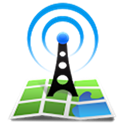Top CellID Finder Alternative Software Options
CellID Finder is a well-known tool designed to help users find a cell phone's location using LAC/CellID and GSM BTS coordinates. While useful, you might be looking for a CellID Finder alternative that offers different features, platforms, or perhaps open-source options. This article explores some of the best alternatives available.
Top CellID Finder Alternatives
Whether you're a developer, a network enthusiast, or simply someone curious about cellular coverage, these alternatives provide robust solutions for cell tower and location-based data, often with unique advantages over CellID Finder.

OpenSignal
OpenSignal allows you to map cellular coverage, find Wi-Fi hotspots, and test and improve your reception for faster data. It's a great CellID Finder alternative available for Free on Web, Android, and iPhone, focusing on user-contributed data to provide comprehensive coverage maps.

openBmap
openBmap, also known as Radiocells.org, is a community project dedicated to collecting information on cell towers and Wi-Fi base stations and mapping them. This Free and Open Source CellID Finder alternative is accessible via Web, Android, Android Tablet, and F-Droid, making it an excellent choice for those who value transparency and community-driven data.

cellumap
Cellumap provides revolutionary cellular coverage maps that are generated not by network operators, but by the users themselves. As a Free CellID Finder alternative available on Web and Android, it offers a unique perspective on real-world network performance based on user contributions.

Mylnikov Geo-Location API for mobile towers
Mylnikov Geo-Location API for mobile towers is a FREE service that enables users to request coordinate positions of mobile cells globally. This CellID Finder alternative is highly versatile, supporting Windows, Android, iPhone, Blackberry, and Windows Phone, making it a strong option for developers and users needing programmatic access to cell location data.
Each of these CellID Finder alternative options offers distinct advantages, from community-driven mapping to comprehensive API access. We encourage you to explore them to find the best fit for your specific needs, whether you're mapping coverage, developing applications, or simply gathering cellular data.